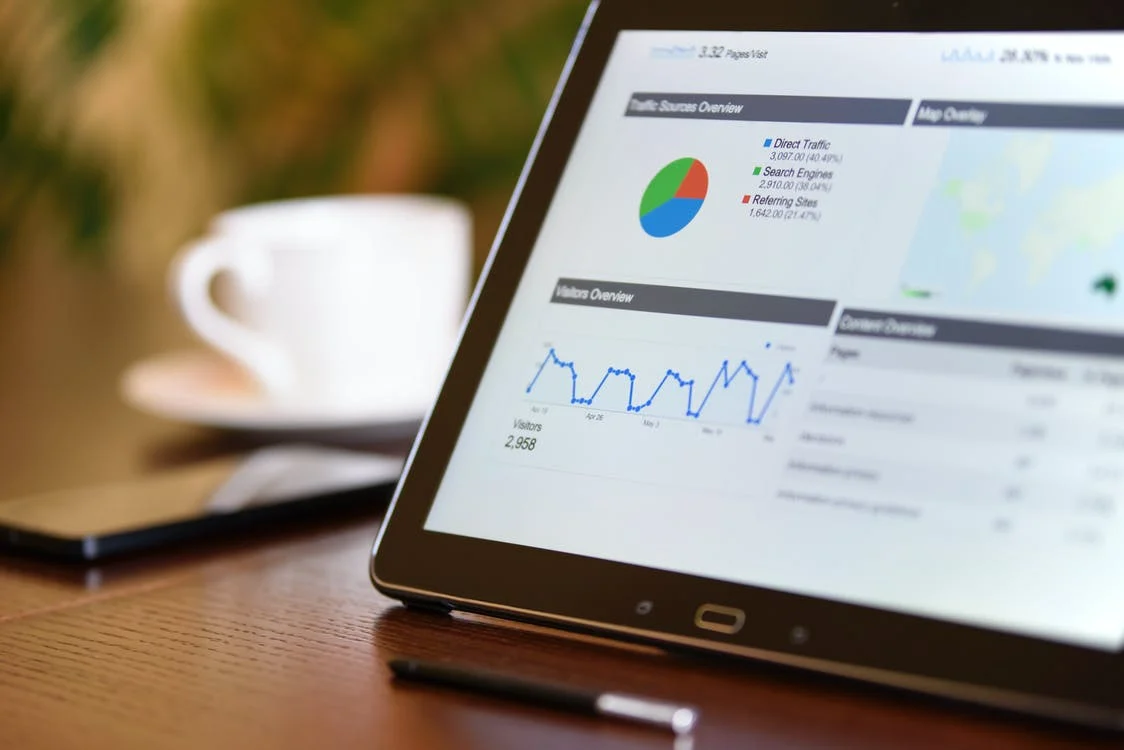With the ever-changing and complicated world of eCommerce marketing, finding new ways to give yourself an edge over your competitors becomes increasingly essential. As online shopping becomes more prevalent, the role of marketers has become more important in boosting their website’s conversion rates and business profits.
One of the many tools at your disposal is advanced visualizations. Advanced visualizations involve creating or modifying your existing data visualization to draw valuable conclusions. You can do this in almost any other business intelligence software platform.
Although data scientists and analysts primarily use these to identify trends within large sets of data, advanced visualizations can also be part of your eCommerce marketing strategy.
What Is Data Visualization
Data visualization is a method used to present data in a format that helps readers understand information quickly and easily. It might include tables, charts, graphs, or infographics. Data visualizations may consist of advanced technology like 3D models and virtual reality.
To create an effective visualization, you need to identify what you’re trying to show. You also have to decide how best to display that information. There are many types of data visualizations, each with its strengths and weaknesses.
For example, pie charts are good for showing simple comparisons between different pieces of data. On the other hand, bar graphs work well for comparing numerical values over time, while scatter plots can help display multivariate relationships between two variables. Finally, line charts are useful for showing trends over time.
How Advanced Visualizations Can Improve Ecommerce Marketing Performance
Advanced visualizations can help you make better decisions about marketing your products. They provide more information than traditional visualizations and are more effective at communicating trends, patterns, and relationships in data. As a result, they can be helpful for a variety of purposes:
Tracking Results
Having a visual idea of how a campaign performs in real time is extremely helpful. For example, it can determine if an ad needs to be modified or if there’s something wrong with either product or campaign.
Integrating visualizations with other tools allows you to track results automatically. As a result, you can spend less time generating reports and more time improving campaigns. Using different colors on charts also helps your marketing team see where sales are coming from and whether one channel performs better than another.
Businesses that use KPI dashboard software have better control over their data, making it easier to make decisions based on what they see happening online. For example, you might be able to answer questions like: How many new visitors do I get each day? Which products are my best sellers? What keywords generate the most revenue? What percentage of my traffic comes from social media channels?
Increasing the Relevance of Reports
With advanced visualizations, you can present data in more meaningful ways.
For example, suppose you have two basic charts. The first chart shows how sales are doing against competitors’ products. The second chart shows sales according to various categories within a specific region. In that case, advanced visualizations make it possible to compare sales performance between competitors within a particular category.
Comparison can be beneficial if a similar product from another company outperforms one of your products. You can use advanced visualizations to drill down into each product’s sales numbers and determine why your product isn’t selling as well as its competition.
You might discover that customers prefer an alternative color or size for your product, which could lead you to change up your inventory or restructure future promotions around these preferences.
Crafting a Narrative
A narrative requires creating a story around your company. It can be a high-level concept explaining what you do or delving into something more deeply personal. Some companies have very little of their narrative. Their products do the primary communication.
Brands are all about telling stories, and everything they do conveys a message and pulls on customer emotions. Utilizing advanced visualizations in eCommerce marketing can help bring those narratives to life in new ways.
By putting complex data in front of customers and allowing them to interact with it, you can give them an understanding of your business’s story. In some cases, you are even helping them tell that story themselves.
Filtering a Deluge of Useless Data
Advertisers rely on metrics that tell them very little about how their campaigns are performing. For example, simply looking at click-through rates (CTRs) for display and search ads don’t mean much.
You can take those numbers and add in data like conversion rates or average order values with advanced visualizations and insights. It will give a complete picture of how well your eCommerce marketing campaign performs. You’ll then be able to make better decisions about where to focus your efforts.
Predicting Churn Rate & Retaining Customers
The churn rate is when customers stop purchasing from you. With e-commerce businesses, it can be one of two things: a customer has moved away or stopped buying altogether.
Advanced visualization platforms can help you better predict customer behavior with real-time data at your fingertips to track customer churn and stay on top of business trends.
By visualizing your historical data over time, you’ll have a clearer picture of where to direct future resources to prevent customer attrition. In addition, by knowing what factors affect customer retention, like what makes them leave, you can make informed decisions about improving their experience.
Accommodating People With Less Technical Skills
In some cases, visualizations are a critical aspect of doing business, even if you’re only in charge of generating content. These visual aids help people understand complex data and statistics, making it easy to see patterns that might otherwise be hard to recognize.
As a marketer, you should know how to use advanced visualizations to generate interest and engagement from your audience. In addition, they can provide an extra layer of context for those who aren’t as well-versed in industry jargon or who don’t have access to advanced analytical tools.
Optimizing Your Campaign
Lead scoring is an integral part of any successful e-commerce business. You can use advanced visualizations to create more accurate lead scores. Knowing critical in-depth details about your marketing campaign can save time and money.
By optimizing ad campaigns, businesses have experienced an increase in their conversion rates which means more clicks and more sales, equating to more revenue.
Advanced visualizations are a great way to improve lead scoring. If you don’t spend some time planning out how your ads will perform before launch, likely, they won’t perform as well as they could.
If you want to maximize conversions for your ads and get them performing at peak performance levels, make sure that you take some time planning them out ahead of time.
Advanced visualizations offer new tools that enable marketers to create highly-targeted ads, including demographic and interest-based targeting. Targeting makes it easier to reach customers interested in your products or services and who are ready to buy.
You can achieve this through lead segmentation. Lead segmentation refers to splitting leads into different groups based on what they do or don’t do.
Segmentation allows you to identify which leads are most likely to convert into customers and which ones aren’t. The better you are at segmenting leads based on their behavior, the better you will be able to engage with those leads.
Advanced Visualization Process Flow and Stages
Data visualization is the practice of converting information into graphical representations to help you understand it better and make better decisions based on this data.
Data Collection and Preparation
Before turning data into a visualization, you need to know what questions you want answers to. For example, collect data from multiple sources (internal or external) and organize it so that your audience can easily consume it.
Suppose you’re creating an infographic on a marketing campaign. In that case, you may want to collect data about traffic, conversion rates, bounce rates, email signups, social shares, etc. After this stage, you should consider scrubbing your email list.
Data Visualization Design
After mining the data, it’s time to visualize it. This step is where you can tell a story with your data by creating charts, maps, infographics, or other visualizations. An excellent way to decide which visualization type you should use is to consider your end goal for that particular project.
Visualization Deployment
Once a visualization is ready, it’s essential to determine how you should use it. Deployment decisions revolve around presentation context. For example, how long an individual should interact with it, what feedback mechanisms are available, and whether supplemental information is needed to make sense of visualization.
Utilize Advanced Visualization In Your ECommerce Marketing
It’s essential to know what visualizations will improve an eCommerce site and how to use them effectively. The insights you gain from data can help you make changes in real-time. These changes can increase traffic, improve sales conversions and monetization, and optimize your e-retail presence for success.
The first step is knowing what you want to achieve with advanced visualizations. Once you have that figured out, consider using Vizlib for Qlik Sense and different visualization types that best suit your eCommerce marketing.









0 Comments